It’s our last morning on the Colorado River, and we float wordlessly toward the takeout—an intentionally silent paddle so that we might reflect on what the last 10 days have brought (and taught) us. The current moves languidly, and we don’t hurry ourselves along, the guides hardly touching the oars. Phoebe and rock wren chirp and chitter along the shoreline, while a lone bat flits overhead. Cliffs stack themselves in layers of time and frame the wide blue sky. In between the cliffs, where shadows give way to sun, the air stirs with a growing heat. Downstream, unavoidable, stands Diamond Peak. The towering pyramid of limestone marks our finish line at Diamond Creek.
We came to the Grand Canyon under the folly of the Freeflow Institute, a Montana-based outdoor school, in order to study water policy and storytelling. Some in the group started at Lee’s Ferry. Others, like me, joined at Pipe Springs, hiking in on the Bright Angel Trail while the group we swapped with hiked out. We were biologists and cinematographers and strategy consultants. Marketing executives and English professors. Forestry technicians and psychologists. Poets and river guides. We spent our days navigating the river, holding class and writing.
As we float in silence, I try to take everything in and calcify the images deep into my bones. I find myself searching for some lesson that I might haul home, but all I can really focus on is just how much I don’t want this trip to end. Yes, I miss my wife and dog. Yes, I want to take a hot shower. But this place. This place doesn’t let go.
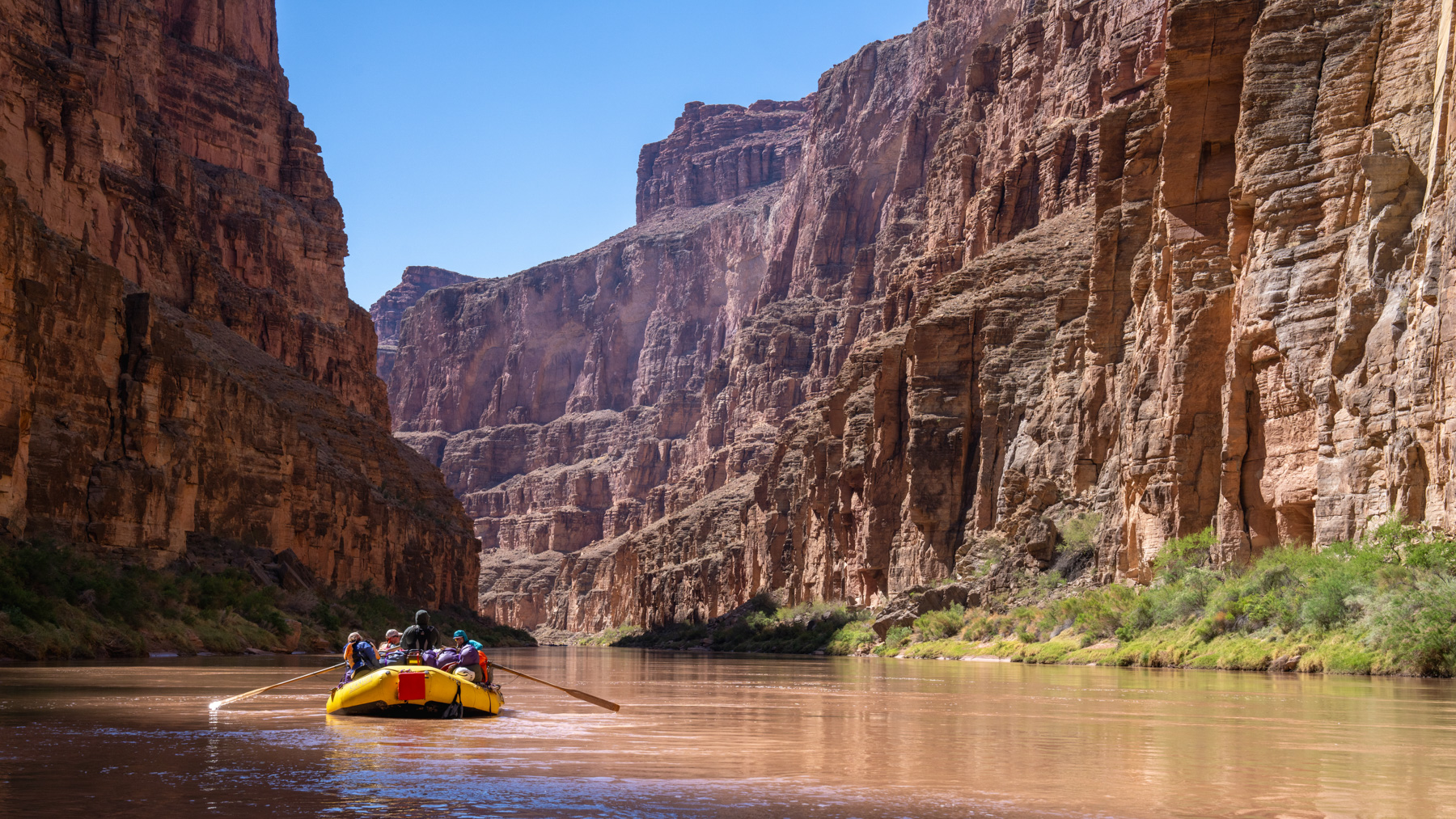
We cross under a trolley cable used to access one of the river gauges on the Colorado—the marker that our silent paddle has come to an end. Though it’s over, none of us rush to speak. There is a nervous, though joyful, laugh and then another in response. The guides herd our rafts into a large, shoreline eddy. We sit, waiting for whatever will come next, and I reach down and touch the water with cracked and hang-nailed fingers. After days of studying and writing about the Colorado, it’s hard to see the water simply as water, hard not to think of the history of the river, the policies that manage it, the threats that face it.
Kelly, one of our guides, stands on her raft and brings the group’s attention back together. To end the trip, Kelly says she only wants to thank everyone. She says she’s guided many trips down the canyon but claims ours was special. What she appreciates most was how willing we all were to share our writing throughout the course, how willing we were to put ourselves out there. For her, it was inspiring.
Kelly asks if she might share a passage with us. She lifts a beat-up book with a cover I can’t quite make out. She sports huge, mirrored shades and a ballcap. Sun-faded PFD. Leopard-print leggings.
Reading the first line, her voice breaks. She pauses, composes herself and continues. She doesn’t actually read from the book she’s holding, but from a wrinkled photocopy that’s folded inside it. The reading speaks of love and sincerity and the hard work of trying.
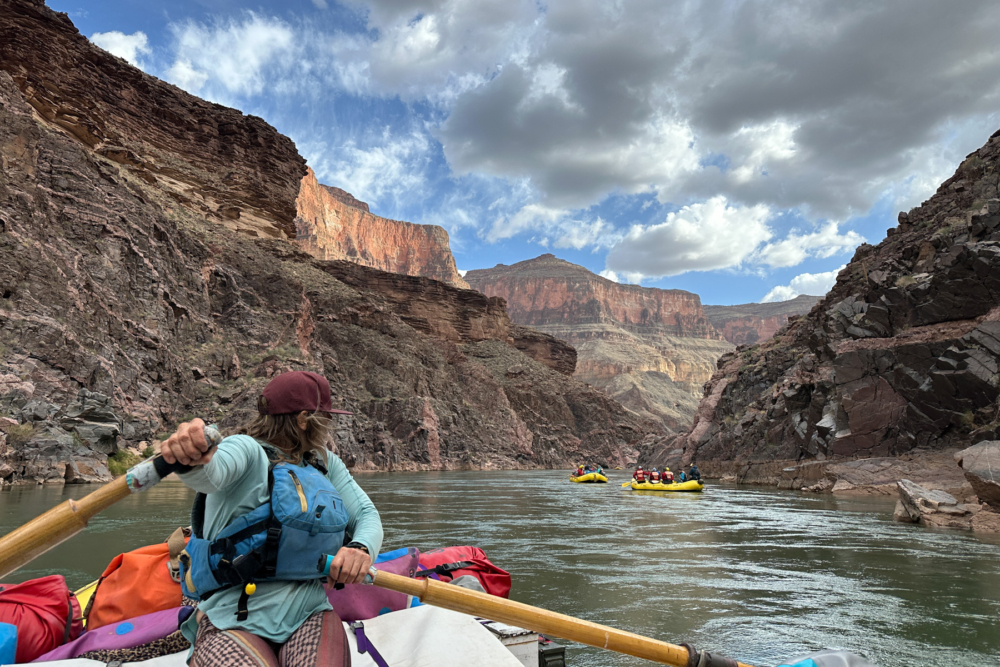
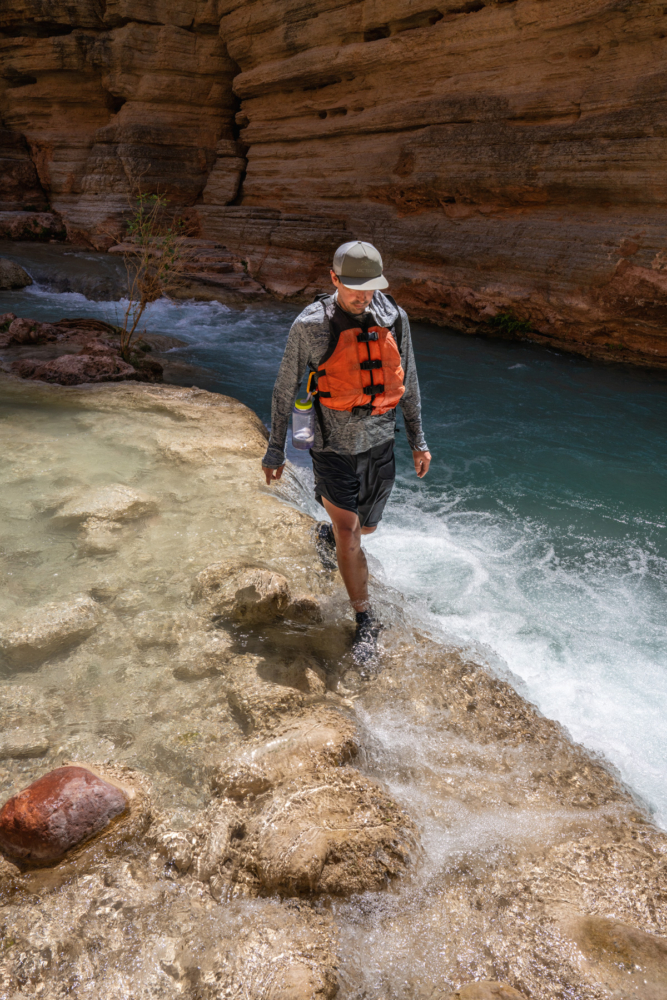
When Kelly finishes, I’m not the only one wiping my eyes. Others in the flotilla hoot and snap. A few take photos. It’s a beautiful moment that feels awful. We are in the calmest water of the trip, but emotionally it feels as if I’m being tumbled through a monster rapid. Maybe that’s forcing the metaphor. Mostly, what it feels like is grief. And then like that, my head is in my hands and I’m bawling in a raft on the Colorado River.
The title of the Freeflow course on the lower section was “The Great Unconformity: Policy, Science, and Humor on the Colorado Plateau” with Dr. Len Necefer and Brendan Leonard. The overarching goal was to use the lens of adventure storytelling to “dive deep” into the history, science, policy, and human geography of the Colorado River Basin and learn how to integrate these elements into “writing that resonates with empathy and insight.”
Necefer, who holds a PhD in engineering and public policy and is the founder of Natives Outdoors, would focus primarily on the policy and science side. Leonard, whose adventure website Semi-Rad has built a dedicated following over the past 15 years, would focus mostly on the humor and writing.
On day six, after a few hours of downstream movement, we beach our rafts at Kanab Creek and hike up the drainage to a natural amphitheater. There, we seat ourselves on a sandstone shelf for a lecture from Necefer on the legacy of uranium and coal mining in the Navajo Nation, as well as on the Colorado River itself. If not for the trilling of a canyon wren and the packrat droppings scattered all around, one might almost mistake the scene for a lecture hall on a college campus—the attentive students with their notebooks ready, the professor standing in front of them, dropping knowledge.
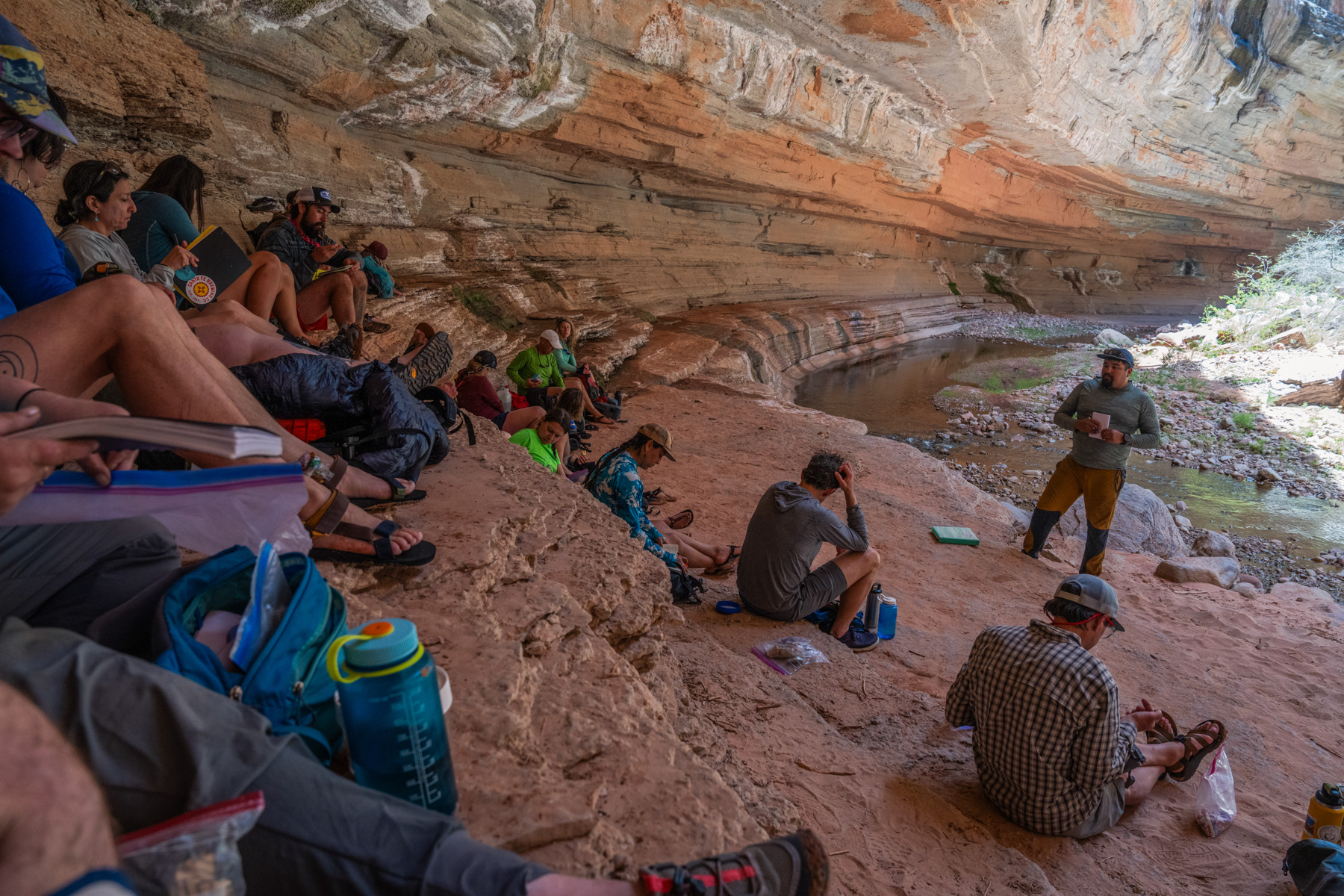
To illustrate the issue of uranium mining in human terms, Necefer shares the story of his grandfather, who worked the mines near Shiprock, New Mexico. Like many uranium miners, Necefer’s grandfather developed lung cancer and as a result had one of his lungs removed. As Necefer reflects, his admiration for his grandfather becomes evident, as does his sense of loss.
“He used to always say,” Necefer remembers, choking up a bit. “Watch out for his tail. Don’t step on my tail.” By tail, his grandfather meant the hose trailing from his nasal cannula to the portable oxygen tank he tugged behind him.
Bringing the issue closer to the river and Kanab Creek, Necefer outlines the size of the Kanab watershed, how if we kept walking, the way we’d been going we’d end up all the way in Utah. Beyond the health effects on miners, another major concern with uranium mining is the possibility of groundwater contamination. Necefer notes how most of the mines near the headwaters of Kanab have been shuttered.
Across the canyon, however, on the south rim, the Pinyon Plain Mine has begun operating for the first time in 40 years. The mine sits within the newly formed Baaj Nwaavjo I’tah Kukveni – Ancestral Footprints of the Grand Canyon National Monument. Though there’s a ban on any “new” mines in the monument, the Pinyon Plain site found exemption. The mine also sits atop the Redwall-Muav aquifer, which feeds a number of springs inside Grand Canyon National Park and is the sole water source for the Havasupai Tribe.
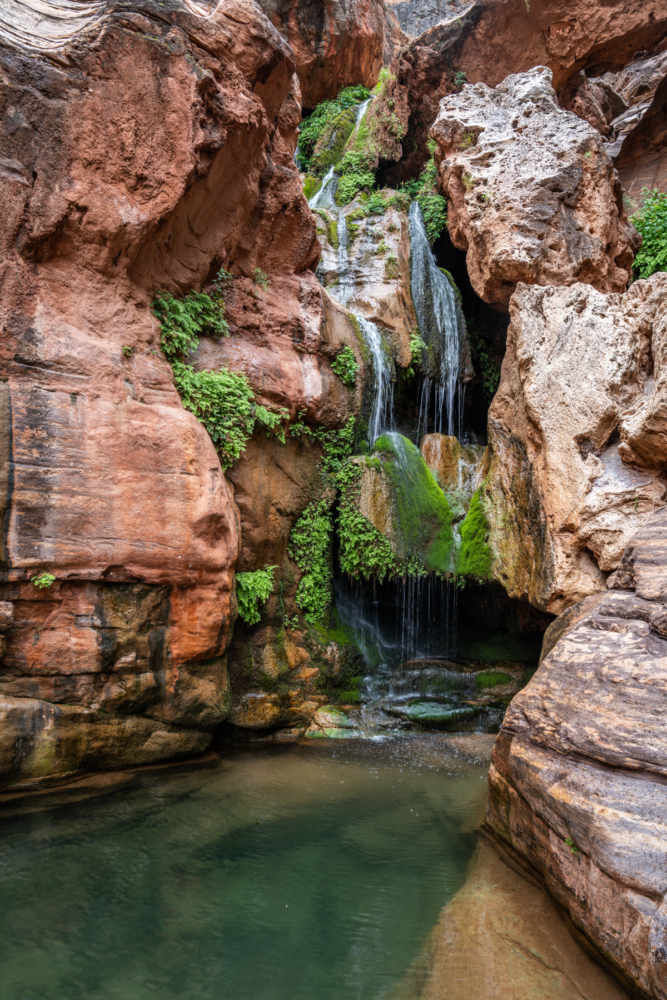
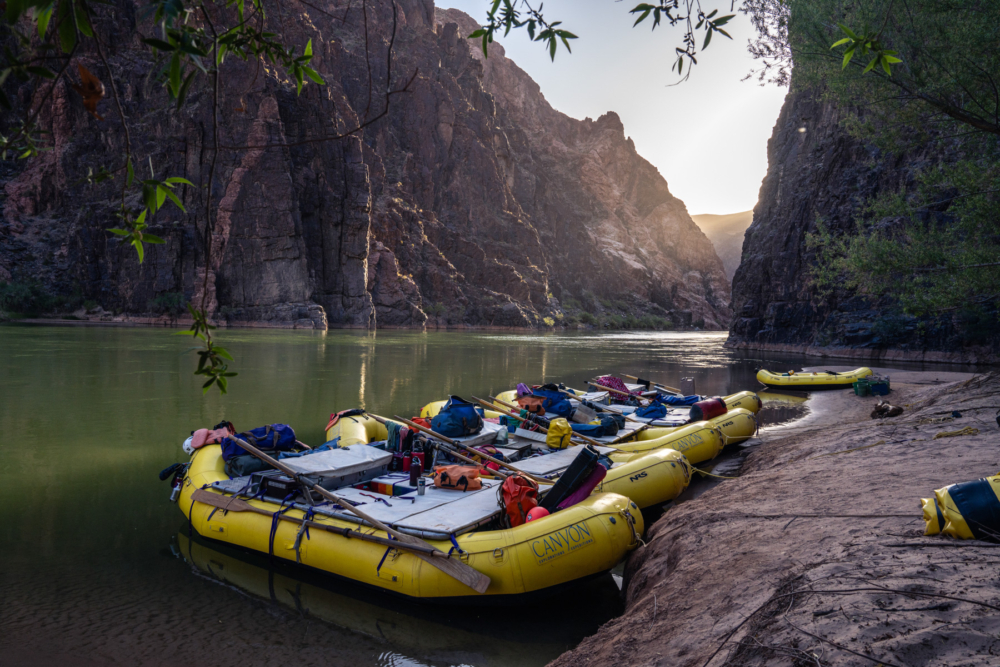
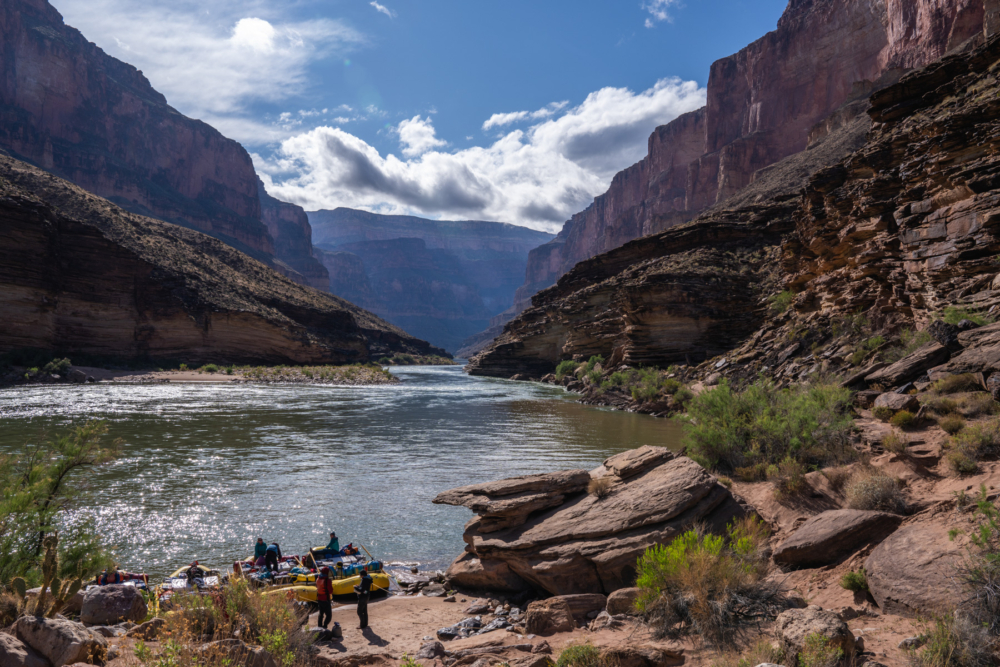
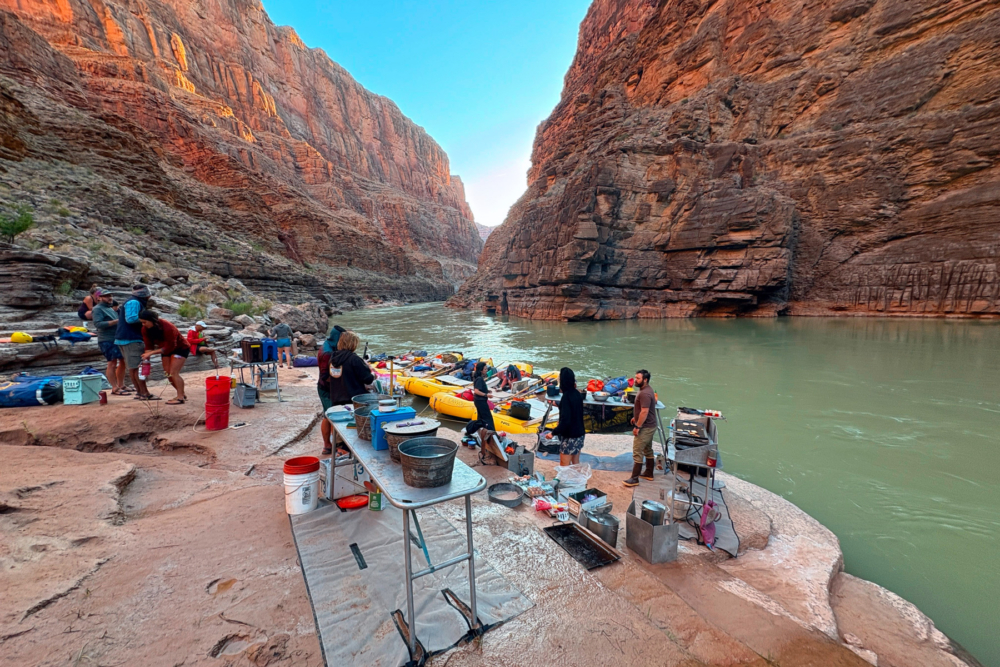
As he concludes his talk, Necefer asks if we have any questions or comments. We offer few. The sun has pushed higher in the sky, blasting Necefer while the rest of us squeeze together in the amphitheater’s ever-shrinking shade. My brain swirls with thoughts and questions, but in the heat I’m not sure what to do with them.
With our reticence, Necefer shares his relief. It’s not that he doesn’t want to talk. His sun shirt is darkened with sweat, his forehead and temples beaded and dripping.
“Thanks,” he says, tugging at his collar. “I’m kinda dying up here.”
We pack up and hike the creek back down to the rafts, some of us walking alone, others deep in conversation. Closer to the river, in one of the shallows, we sidestep a swirl of mating flannelmouth suckers—the only endemic species native to the Grand Canyon not listed as an endangered species. When we reach the boats, we pull on splash jackets and buckle ourselves into PFDs, fill water bottles and slather on another coating of sunscreen.
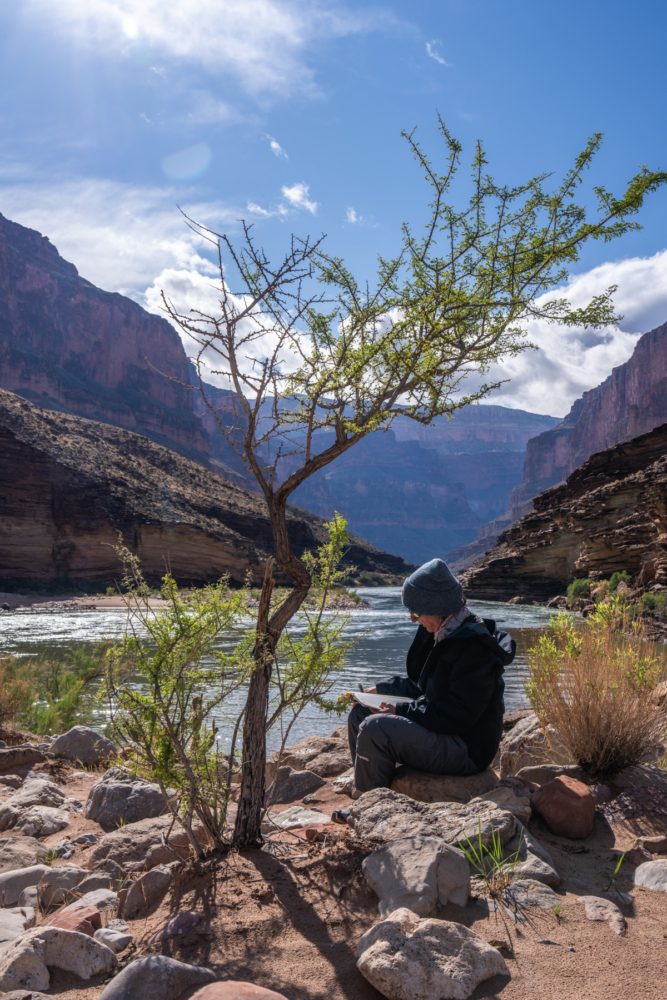
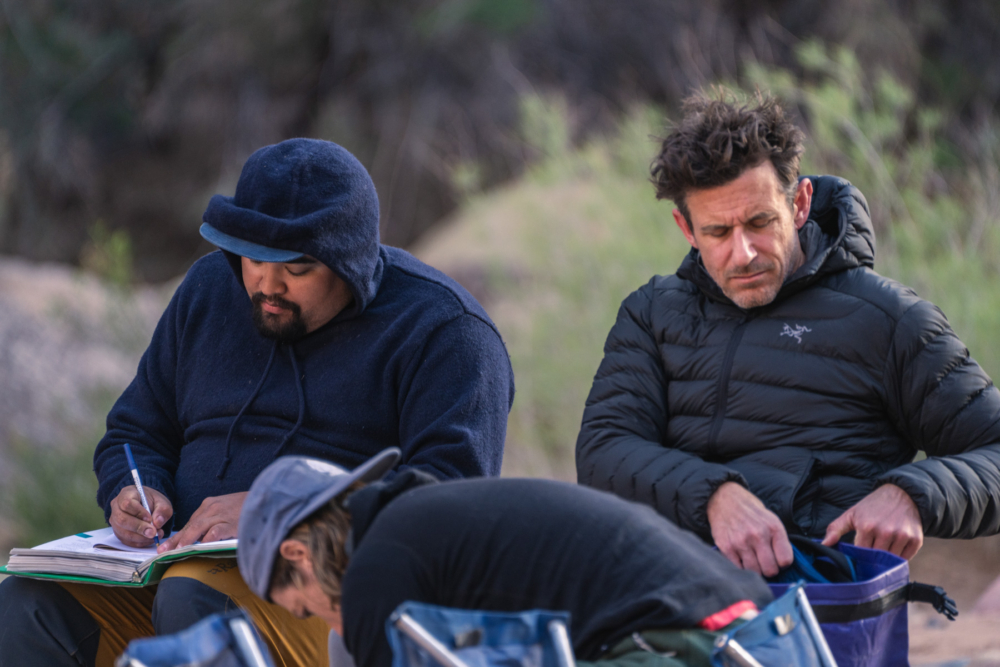
Soon, we reach Upset Rapid, whose name is non-ironic. I’ve rotated into a seat on Sequoia’s boat, the youngest guide of the crew. I sit up front with Angela, a mom and trail runner and senior engagement director at a conservation nonprofit. As we drift toward the rapid, Sequoia puts on her helmet. Angela and I do the same. Ahead, we can see the drenching we’re about to get, the waves peaking and crashing. The big, boat-eating hole at the bottom. The way this rapid, like almost every in the Grand Canyon, might send us swimming.
“Hold on,” Sequoia says, as if she even needs to.
Sequoia pulls on the oars and charges right into the meat of things, squaring the boat to each wave, then lining us up for the hit at the bottom. When the raft drops into the hole, Angela and I throw ourselves forward as instructed. The water slams us cold and hard, drumming me in the chest and pushing me backward, burning its way up my nose.
Downstream of the hole, I shake the water from my face. Angela explodes in laughter and shouts a pure, full-bellied “Woo-hoo!” Sequoia follows with her own. I can’t help but do the same, once I’ve spit the river out.
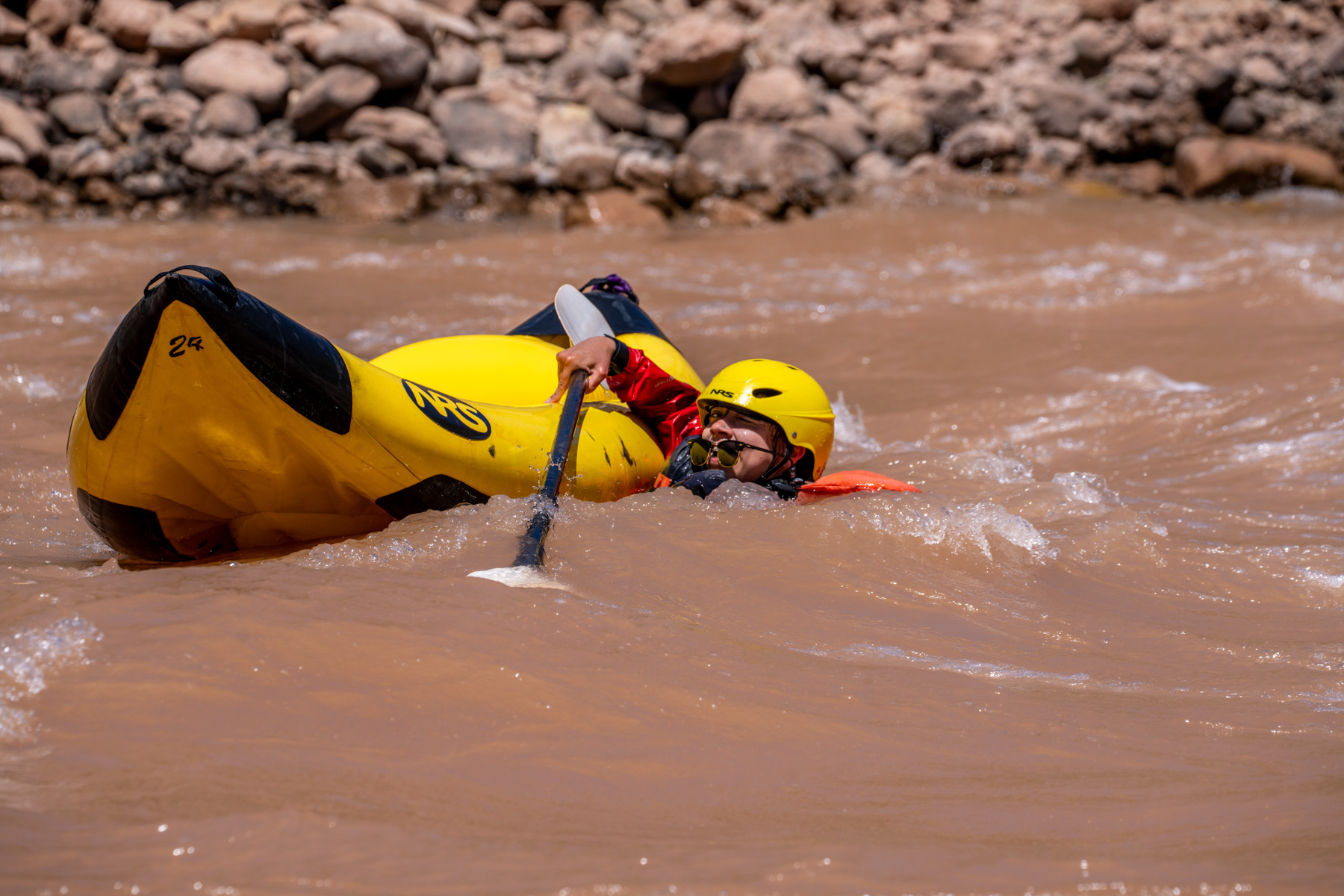
I have a window seat on my flight home. As the plane climbs, Phoenix spreads out below. After almost two weeks on the river—my whole world shrunk down to just a handful of people, no noise but that of our voices, a battered guitar, some birds, and the river—the immensity of the metropolis is almost too much to process. After days of discussing water policy, climate change, and the competing values we ascribe to a thing like the Colorado River, the scope of it all comes into view.
I scan the grid of the city. It takes only a moment before I spot the Central Arizona Project Canal, the 336-mile system that pumps water out of the Colorado River for use in Phoenix and Tucson. The canal runs in straight lines and angles up and around North Phoenix and Noterro, and then out into the empty desert and back toward its start at Lake Havasu. In the parlance of our trip, the canal is a giant straw. And with the Colorado River, there’s a lot of people who want straws. In the end, the whole fight boils down to who gets those straws and how big they are.
Out my window, the landscape unwinds like a movie. The red rocks of Sedona are unmistakable, as is Humphrey’s Peak. Soon, we’re passing the great cleave of earth that is the Grand Canyon. Even from such altitude, with everything miniaturized, the size of the canyon remains mesmerizing. Still, it’s hard to reconcile this view with the more intimate one from just a day before. Proximity matters.
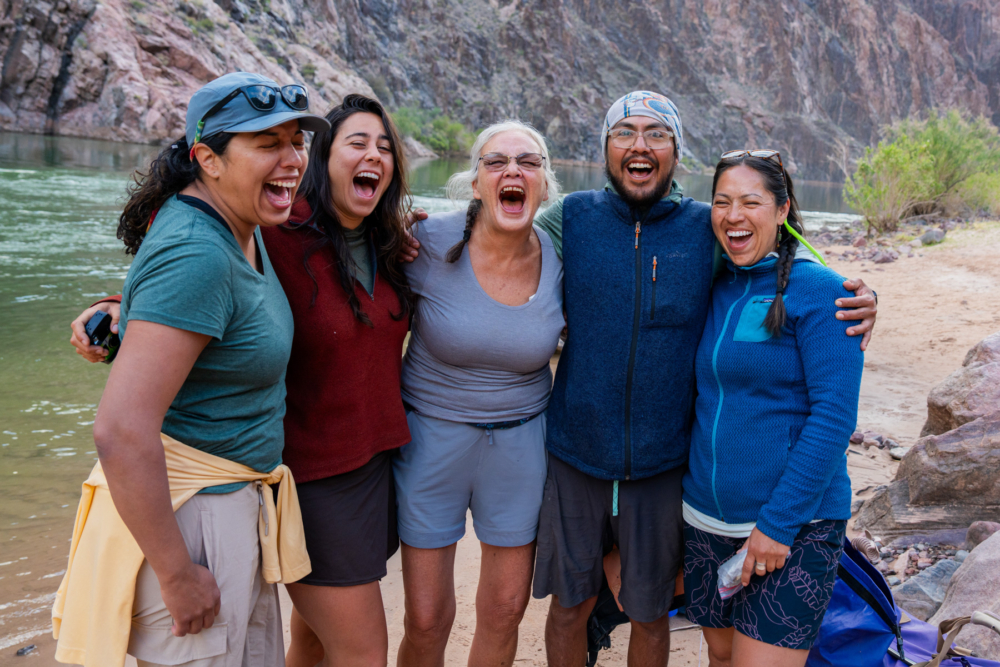
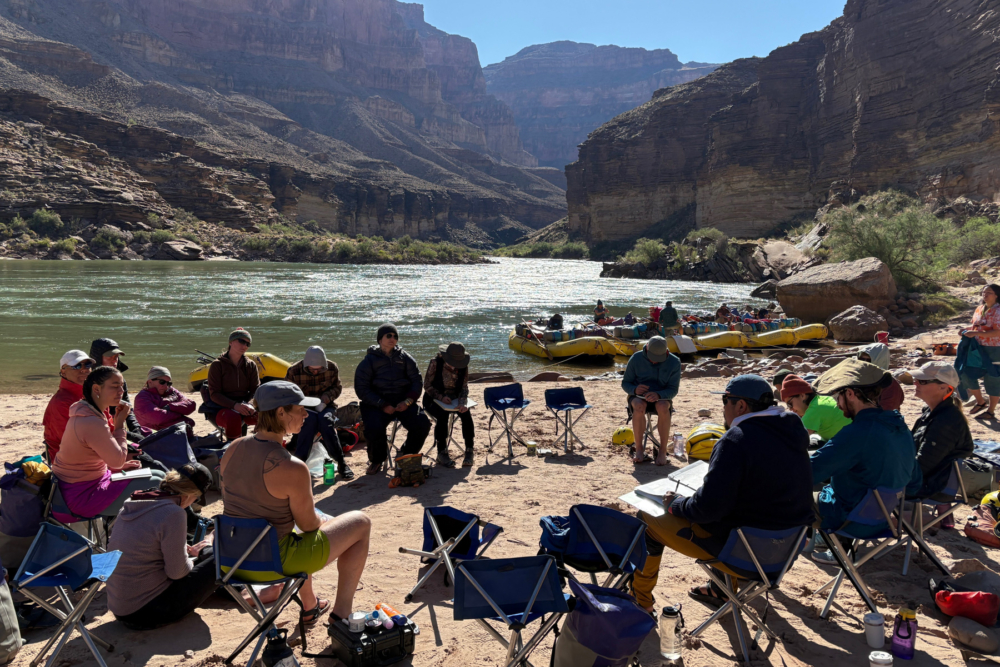
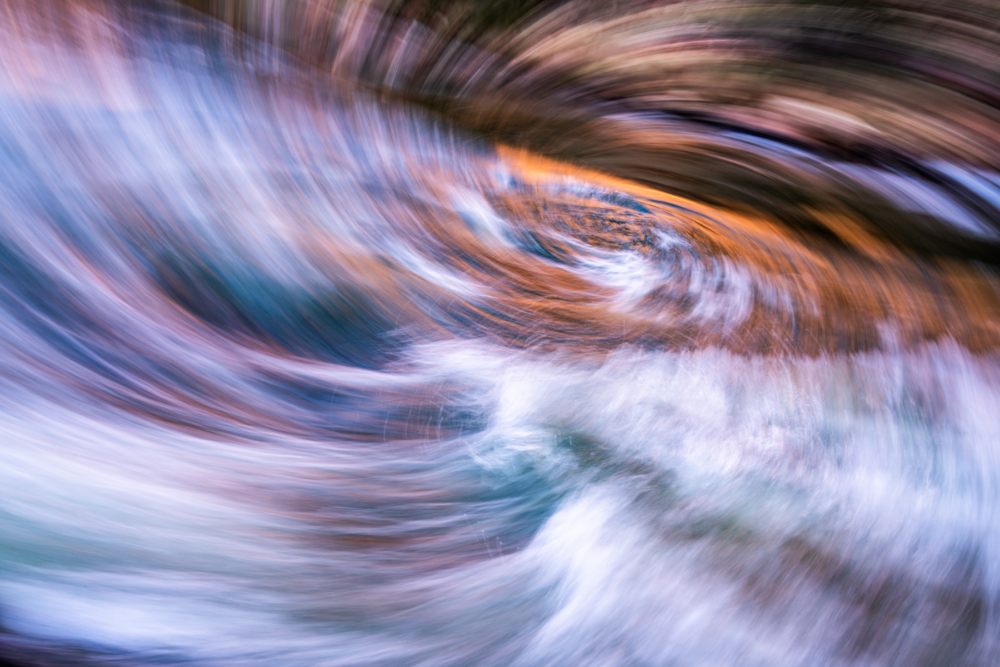
During one of our last sessions on the river, Brendan Leonard talked with us about endings. How do you end a story with the most impact? After sharing a few examples, Leonard discussed moves like ending an essay with a lesson learned or a lyric moment. Maybe even a rhetorical question. If our goal was to tell stories that could drive policy improvement, some in the group wondered if our stories mustn’t end with an inspiring call to action. Others wondered if a good ending wasn’t maybe more about changing the framing. For me, I like to think of thresholds. The moment between one thing and another.
As my plane continues west, the Grand Canyon slowly drops from view. I lower my window shade and wrestle with a familiar grief—the desire for a story to go on, even though it’s already over. Toward the end of the trip, I found myself wondering how much any of it would matter. Could bringing 20 thinkers, writers, and activists down the Colorado River actually help save it? But maybe that was the wrong question. Maybe it’s not the river that needs saving as much as we do.
Back home, I find myself paging through the journal I took with me on the river, not so much to read anything, but just to feel the pages and the sand that still clings to them. That invisible sand you only know is there by touch. It’s the same sand the whole big place is made of. You’re not supposed to take anything from the Grand Canyon. But that’s impossible. Once you go there, you carry it with you forever.
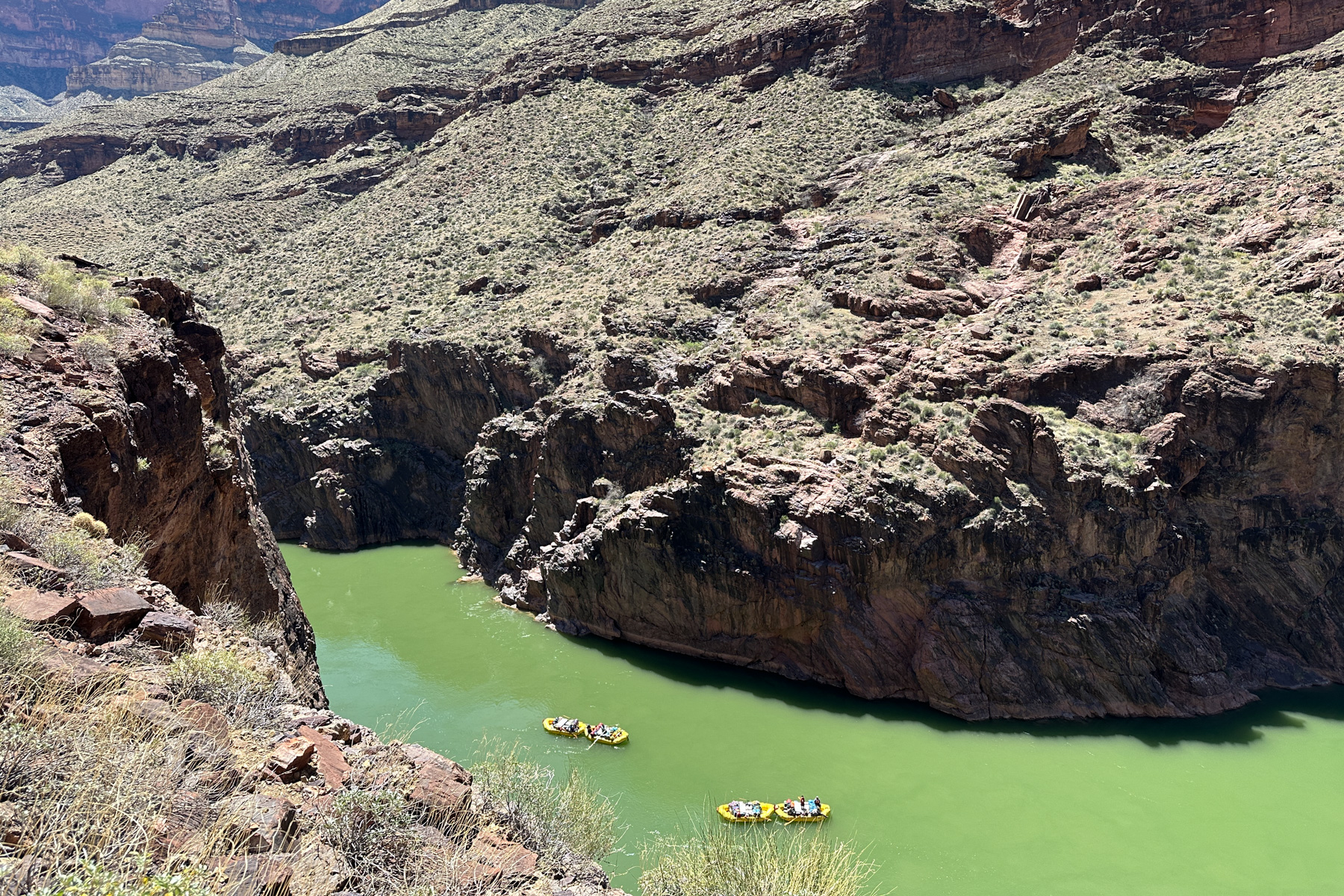
***
Guest Contributor Eliot Treichel is a writer, trail runner, and former whitewater kayak instructor. His work includes the young adult novel A Series of Small Maneuvers and the story collection Close Is Fine. Originally from Wisconsin, he now lives in La Grande, Oregon, where he is an Assistant Professor of English/Writing at Eastern Oregon University. Visit his website eliottreichel.com and find him on Instagram @eliottreichel.
Photography courtesy of Kael Van Buskirk, Jennifer Stagner and Brendan Leonard.